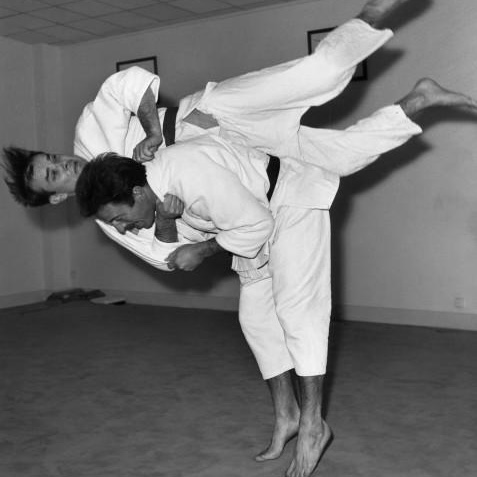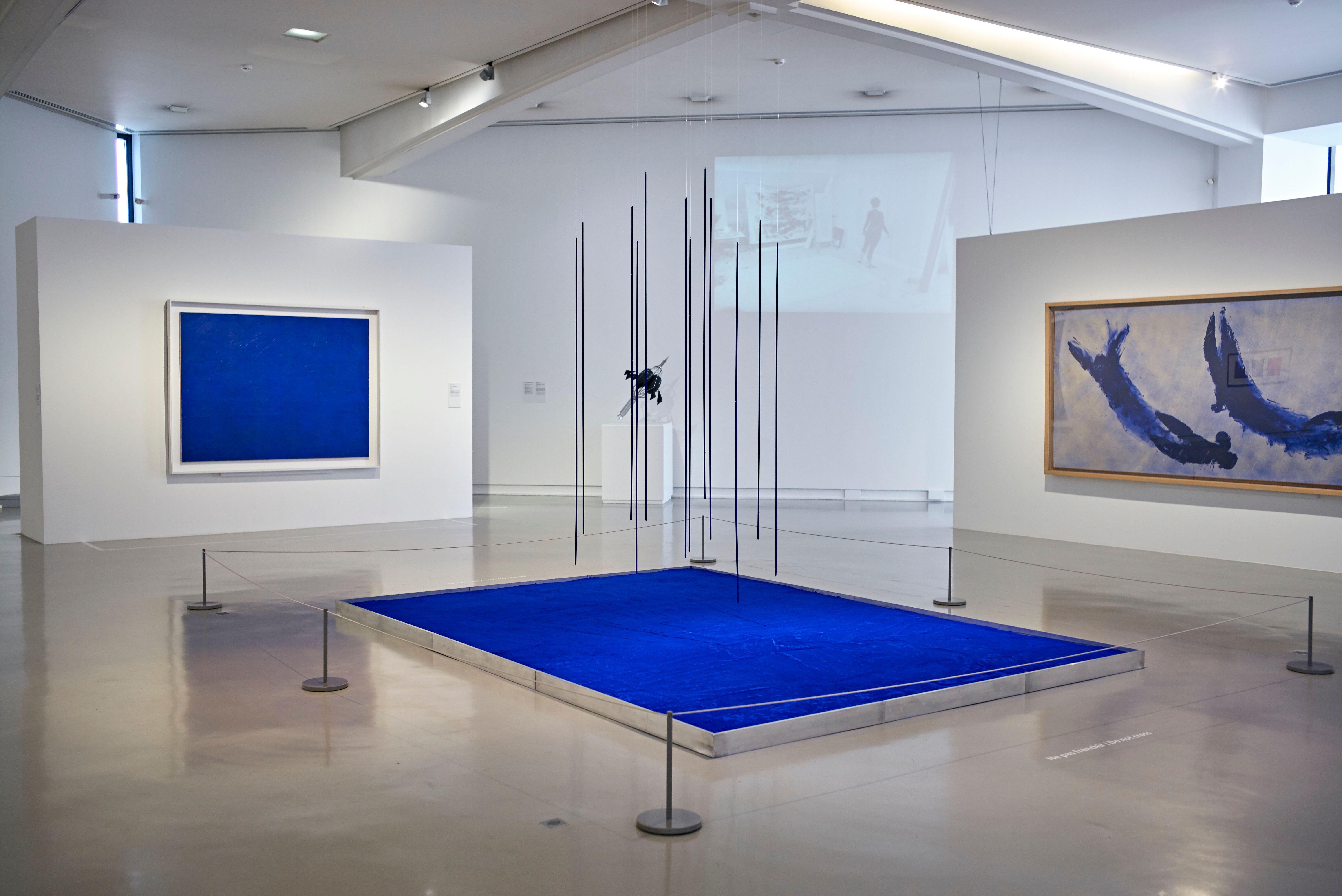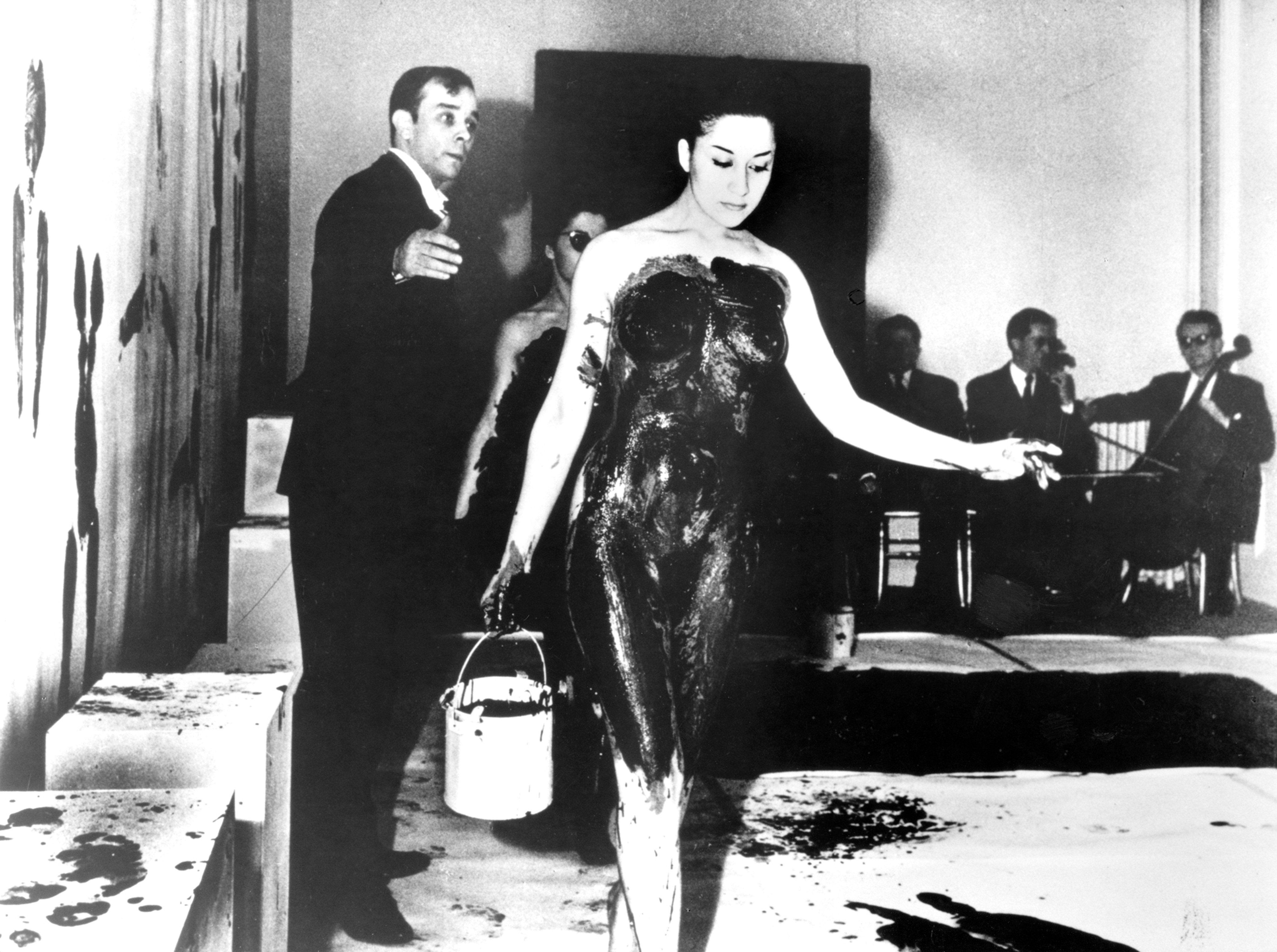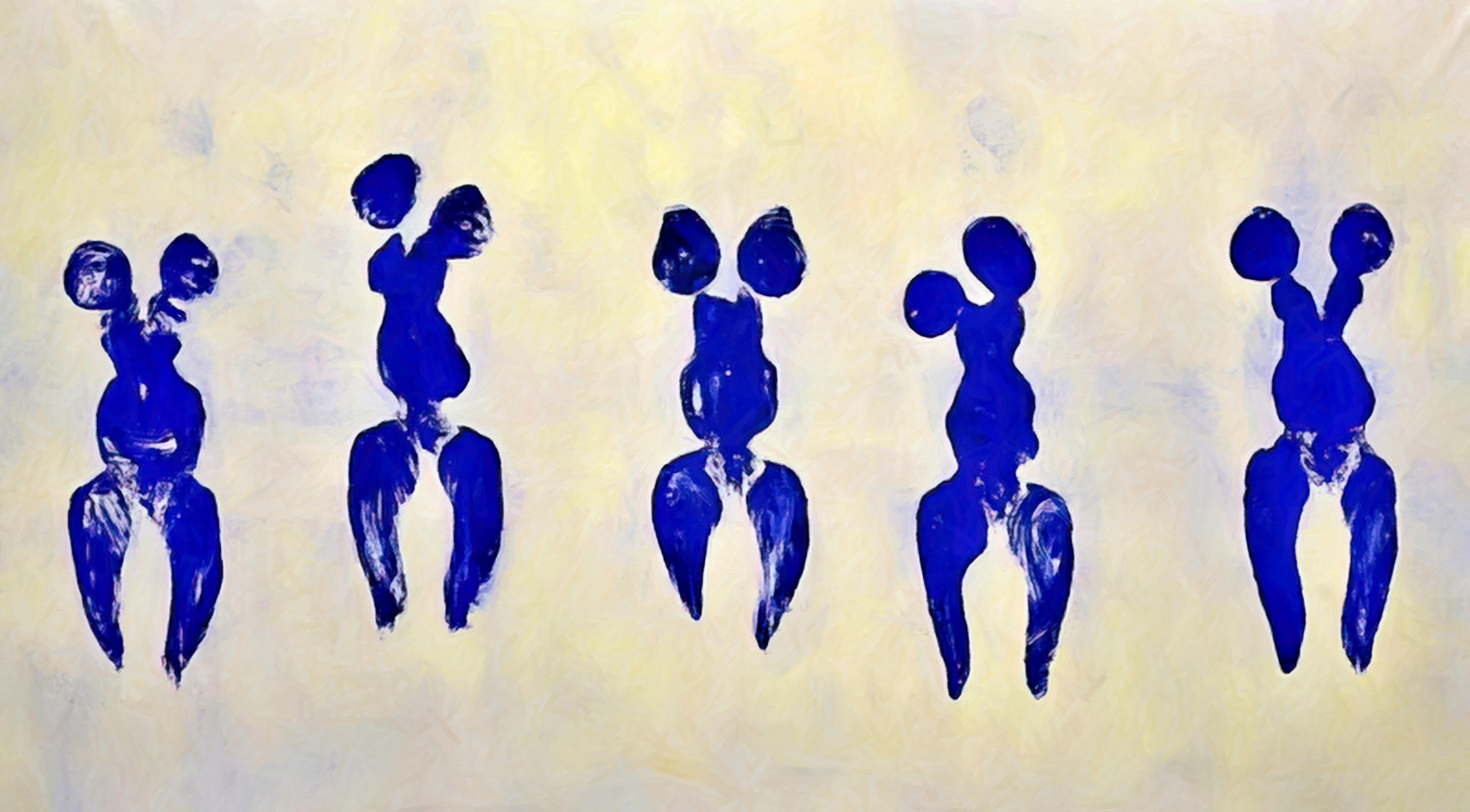Yves Klein: From judoka to master of color


Judo thus became a key element in understanding his artistic approach. As Klein explains: “What interests me is the movement of Judo, the end of the movement which is always abstract and purely spiritual.” For him, “Judo is art, it is an art of the same value as great music because it must be recreated each time one wants to play it again. It is a personal and universal art because it is art in combat, in other words, life itself.”
This approach to combat led him to study the body and movement in depth, an exploration he continued in Japan. His art found a unique form in the Anthropometries, a ritual where the model, covered in patented IKB (International Klein Blue) pigment, imprints their body on a canvas, whether propped against a wall or laid on the floor like a tatami. These performances, both ritualistic and theatrical, often took place before a small audience, accompanied by an orchestra playing Klein’s Monotone Symphony, a single note held for 24 minutes, followed by 24 minutes of silence. The Anthropometries reveal beauty by capturing the presence of the model, while staging Klein's conception of art: creating a lived moment, surprising and provocative, evoking a new sensitivity.


Through his unique journey as a judoka and artist, Yves Klein managed to fuse his two passions to create an innovative and spiritual form of art. Judo, much more than just a martial art, became for him a philosophy of life, permeating his works and performances. By combining the rigor and discipline of judo with the free and provocative expression of art, Klein developed a singular aesthetic where beauty emerges from gesture and ritual. His work, deeply marked by this duality, continues to influence and fascinate, demonstrating the power of interdisciplinarity in artistic creation. Thus, Yves Klein remains an iconic figure, showing that art, like judo, is a space for self-transcendence and perpetual reinvention.



